Which statement best describes the Digital Experience Monitor (DEM) feature on FortiSASE?
To complete their day-to-day operations, remote users require access to a TCP-based application that is hosted on a private web server. Which FortiSASE deployment use case provides the most efficient and secure method for meeting the remote users' requirements?
Your organization is currently using FortiSASE for its cybersecurity. They have recently hired a contractor who will work from the HQ office and who needs temporary internet access in order to set up a web-based point of sale (POS) system.
What is the recommended way to provide internet access to the contractor?
Refer to the exhibit.
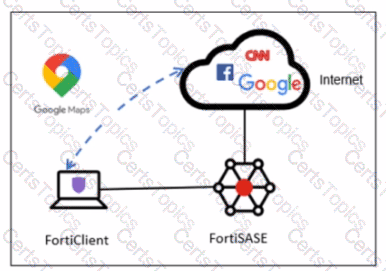
A company has a requirement to inspect all the endpoint internet traffic on FortiSASE, and exclude Google Maps traffic from the FortiSASE VPN tunnel and redirect it to the endpoint physical Interface.
Which configuration must you apply to achieve this requirement?
Which statement applies to a single sign-on (SSO) deployment on FortiSASE?
Which two deployment methods are used to connect a FortiExtender as a FortiSASE LAN extension? (Choose two.)
What are two requirements to enable the MSSP feature on FortiSASE? (Choose two.)
Refer to the exhibits.
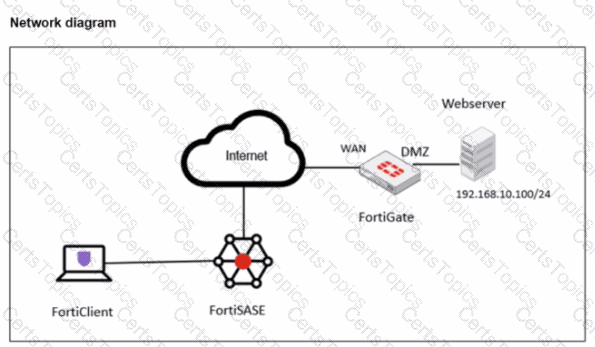
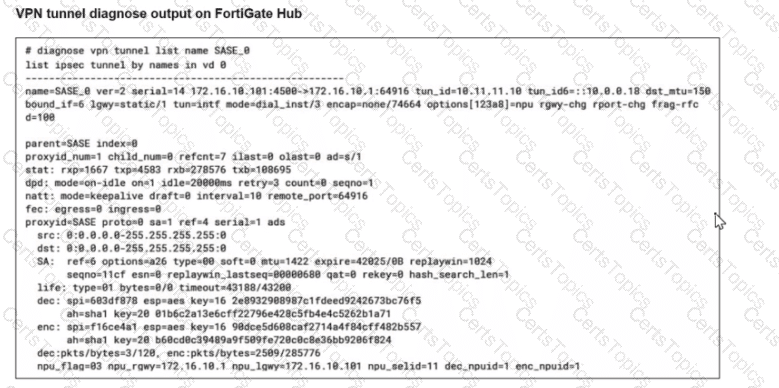
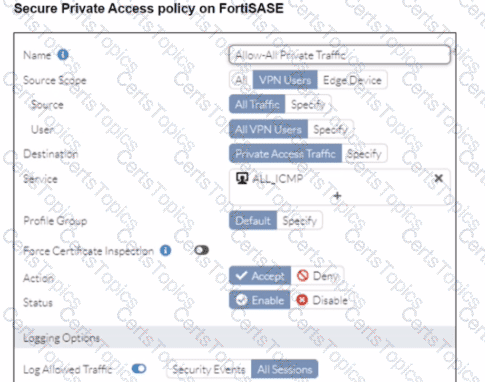
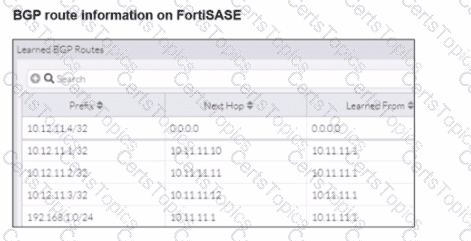
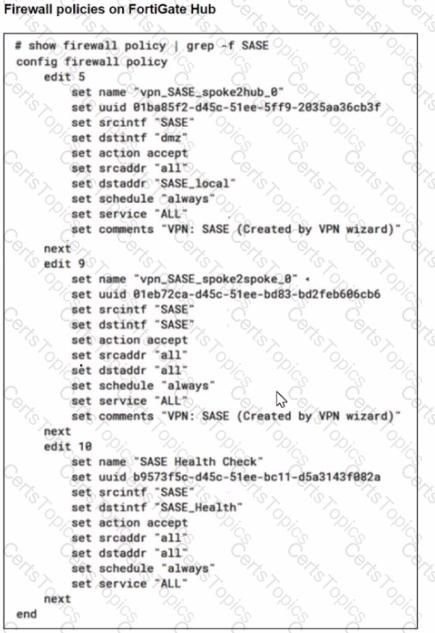
A FortiSASE administrator is trying to configure FortiSASE as a spoke to a FortiGate hub. The tunnel is up to the FortiGale hub. However, the administrator is not able to ping the webserver hosted behind the FortiGate hub.
Based on the output, what is the reason for the ping failures?
When deploying FortiSASE agent-based clients, which three features are available compared to an agentless solution? (Choose three.)
Which FortiSASE feature ensures least-privileged user access to all applications?
Which two advantages does FortiSASE bring to businesses with multiple branch offices? (Choose two.)
A FortiSASE administrator is configuring a Secure Private Access (SPA) solution to share endpoint information with a corporate FortiGate.
Which three configuration actions will achieve this solution? (Choose three.)
Refer to the exhibit.
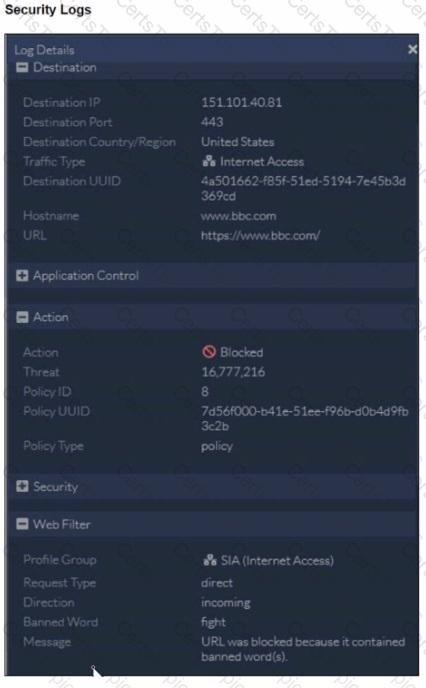
To allow access, which web tiller configuration must you change on FortiSASE?